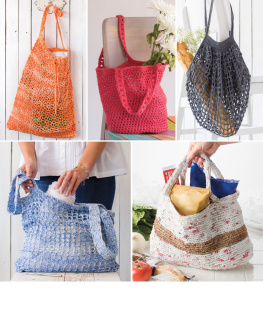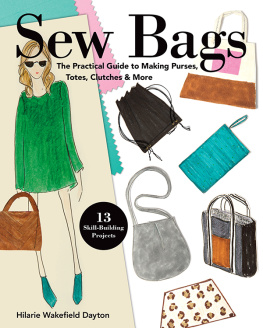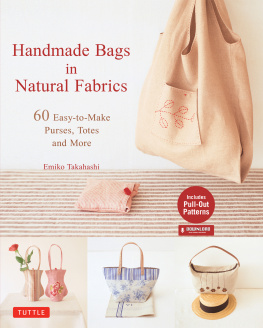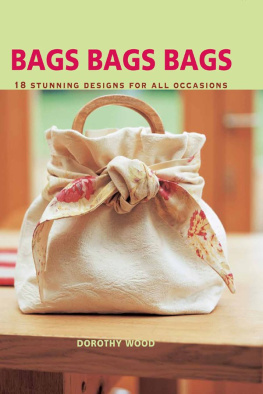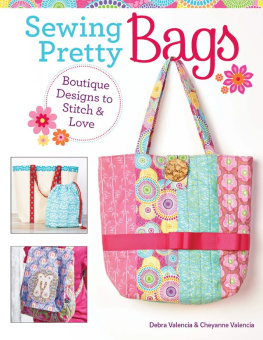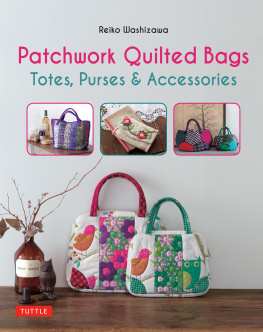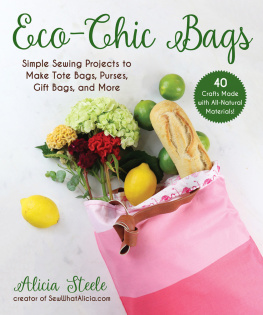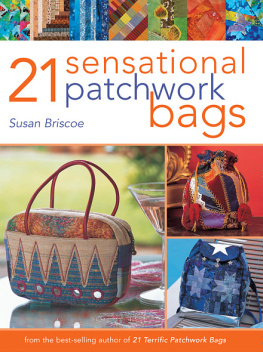best of stitch
BAGS TO SEW
From the editors of Stitch magazine
Compiled by Tricia Waddell

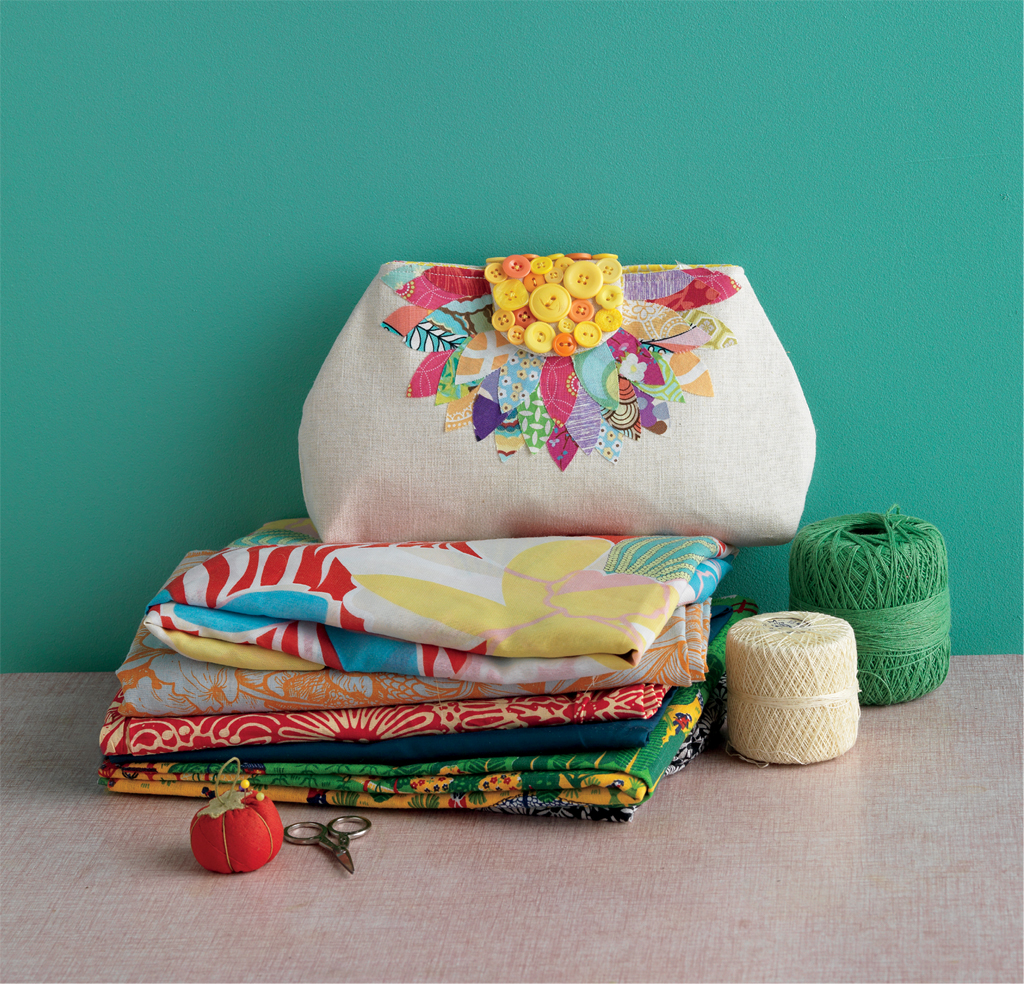
introduction
Somehow, we never seem to have enough bags. Every outfit, occasion, and season seems to call for its own carry-all. What could be more fun or satisfying than creating a one-of-a-kind custom bag that cant be found in any store, coordinated perfectly with your outfit?
If you share our bag obsession, we know that in the following pages you will find a bag project (or two or three) that will be the perfect accessory to a favorite outfit. Weve chosen our favorite bag designs from the pages of Stitch, along with five brand-new, never-before-published designs to entice you to start sewing right away.
Pretty patchwork bags that are great for stashbusting, bags featuring creative embellishments from appliqu to embroidery, bags made with a variety of clever construction techniquestheyre all here, and every project has a unique design twist. Youll find a variety of sizes and shapes, including totes, messenger bags, clutches, coin purses, wallets, and more. No matter how much or how little time you have to sew, or your sewing skill level, you will find the perfect project.
To ensure your sewing success, check out the technique sidebars throughout the book, from tips for sewing leather to DIY felting, along with general bag construction tips and tricks and sewing basics. Youll also find all the full-size pattern pieces and templates on the full-size pattern insert pages bound into the book.
What are you waiting for? Lets sew!
Happy sewing,
The Editors of Stitch

pretty in patchwork
If you love color, print, and pattern, and have the fabric stash to prove it, then patchwork is your best friend. There are so many ways to creatively approach fabric piecing. Showcase big bold blocks of color with the (page 28). Let the fabric be your guide, and you can never go wrong!
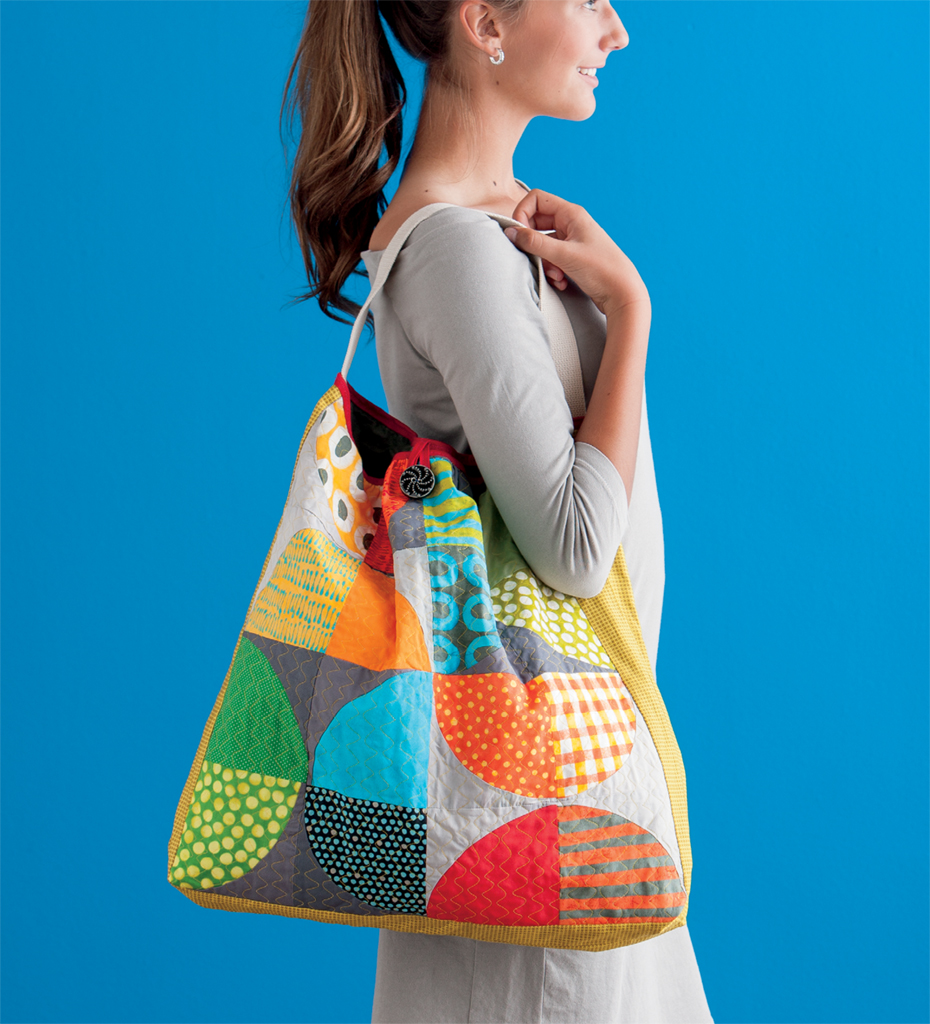
half-moon rising hobo bag
A tiled-floor design inspired the patchwork for this generously sized hobo bag. Improvisational piecing joins half-moon fabric shapes in a fearless mix of colors, patterns, and prints. To achieve the signature, slouchy style of a hobo, the exterior and lining are gathered along the top of the bag, and a short strip of wide webbing creates the strap. The result is a practical, roomy bag that is bursting with color. byMalka Dubrawsky
FABRIC
- Sixteen assorted 6" 6" (15 cm 15 cm) warm-colored cotton fabric pieces (shown: red and orange)
- Sixteen assorted 6" 6" (15 cm 15 cm) cool-colored cotton fabric pieces (shown: blue and green)
- 38 yd (34.5 cm) each of two 45" (114.5 cm) wide neutral cotton solids for block backgrounds (shown: dark gray and light gray)
- 38 yd (34.5 cm) of 45" (114.5 cm) wide coordinating cotton fabric for side and bottom panels
- 138 yd (125.5 cm) of 45" (114.5 cm) wide cotton fabric for lining
- 138 yd (125.5 cm) of 45" (114.5 cm) wide muslin
OTHER SUPPLIES
- Cardboard or template plastic
- Coordinating cotton sewing thread
- 114 yd (114.5 cm) of 12" (1.3 cm) wide double-fold bias tape
- 20" (51 cm) of 112" (3.8 cm) wide cotton webbing for handle
- 114" (3.2 cm) wide button
- Rotary cutter, rigid acrylic ruler, and self-healing mat
- Handsewing needle
- Templates on pattern insert (Download the pattern insert files here.)
- Optional: Quilt basting pins
FINISHED SIZE
- 20" 20" 3" (51 51 7.5 cm), excluding strap
NOTES
- All seam allowances are 14" (6 mm) unless otherwise noted.
- Press seams to one side, alternating sides where seams intersect.
CUT THE FABRIC
Cut the following pieces as directed. To make templates, trace Pattern A and Pattern B (see pattern insert) onto cardboard or template plastic; cut out.
From assorted warm-colored pieces:
- Sixteen half-moon shapes (piece A) using template A
From assorted cool-colored pieces:
- Sixteen half-moon shapes (piece A) using template A
From first neutral-colored solid:
- Sixteen backgrounds (piece B) using template B
From second neutral-colored solid:
- Sixteen backgrounds (piece B) using template B
From the fabric for the side and bottom panels:
- Four 2" 22" (5 56 cm) side strips
- Two 2" 25" (5 63.5 cm) bottom strips
From the lining fabric:
- Two 23" 22" (58.5 56 cm) rectangles
From the muslin:
- Two 24" 24" (61 61 cm) squares
MAKE THE PATCHWORK
Fold one half-moon piece (A) and one background piece (B) in half and crease (); unfold.

figure 1
With right sides facing, pin A to B along the curved edge, matching the creased centers and raw edges (). Sew together, easing the curved edges. Press seam to one side, clipping the seam allowance if necessary.

figure 2
Repeat Steps 2 and 3 to make a total of thirty-two patchwork squares. (Note: Combine all warm-colored A pieces with one neutral solid and all cool-colored A pieces with the second neutral solid or mix as desired.)
Pin two warm-colored patchwork squares, right sides together, to make a half-moon shape. Sew the squares together with a 14" (6 mm) seam allowance (). Press seam allowance to one side. Repeat to make a total of eight warm-colored block pairs.
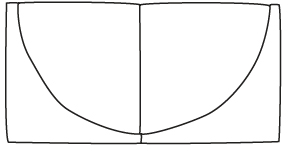
figure 3
With right sides together, pin and sew two pairs together so that the curved sides of half-moons meet in the center. Repeat to make a total of four warm-colored blocks ().
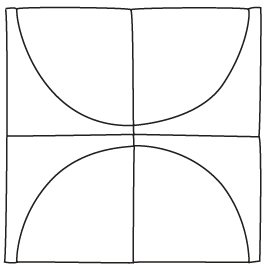
figure 4
Repeat Steps 5 and 6 with the cool-colored patchwork squares to create a total of four cool-colored blocks.
With right sides together, pin and sew one cool-colored block and one warm-colored block together with a 14" (6 mm) seam allowance (). Press seam open. Repeat to sew a second pair of blocks.





